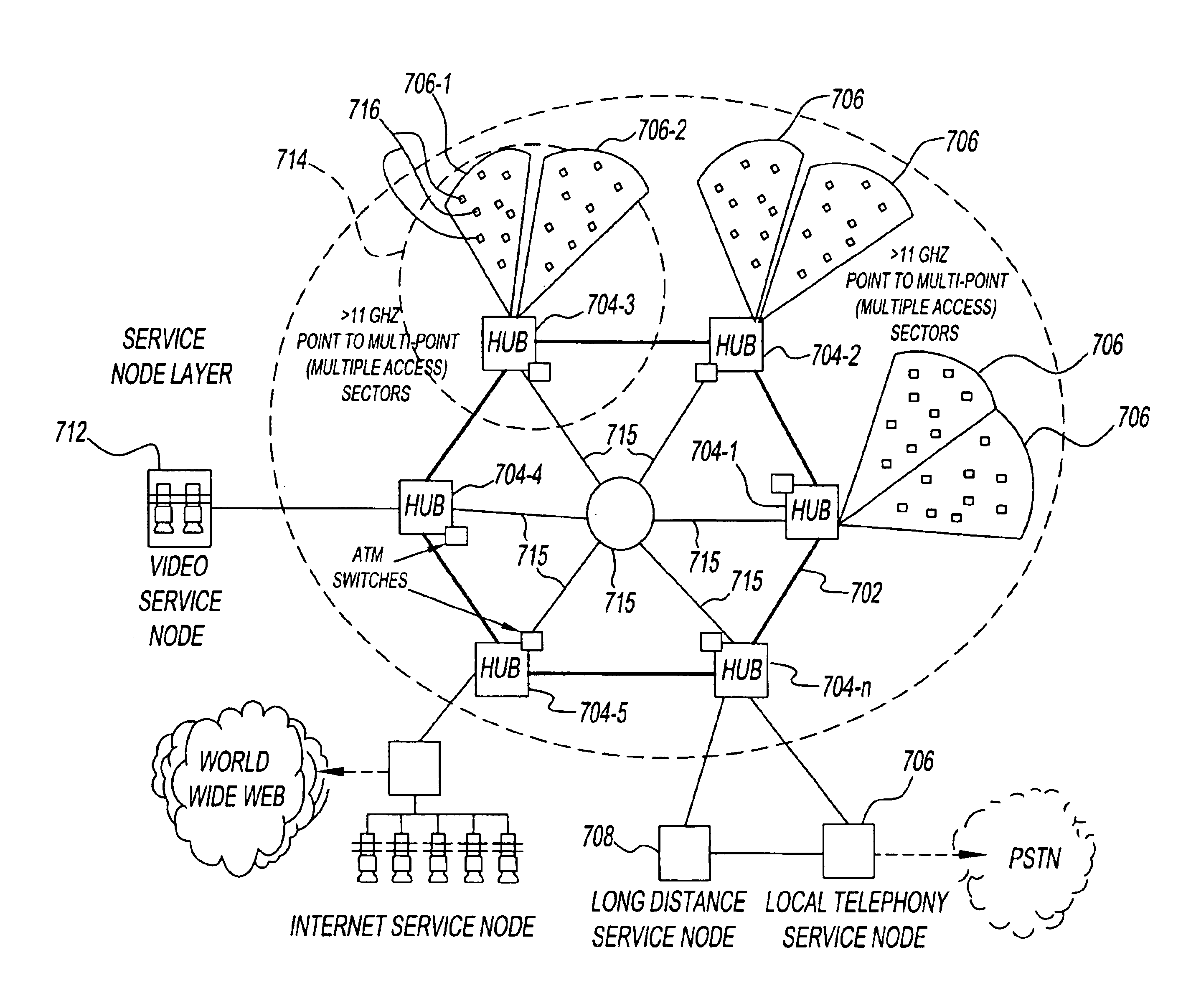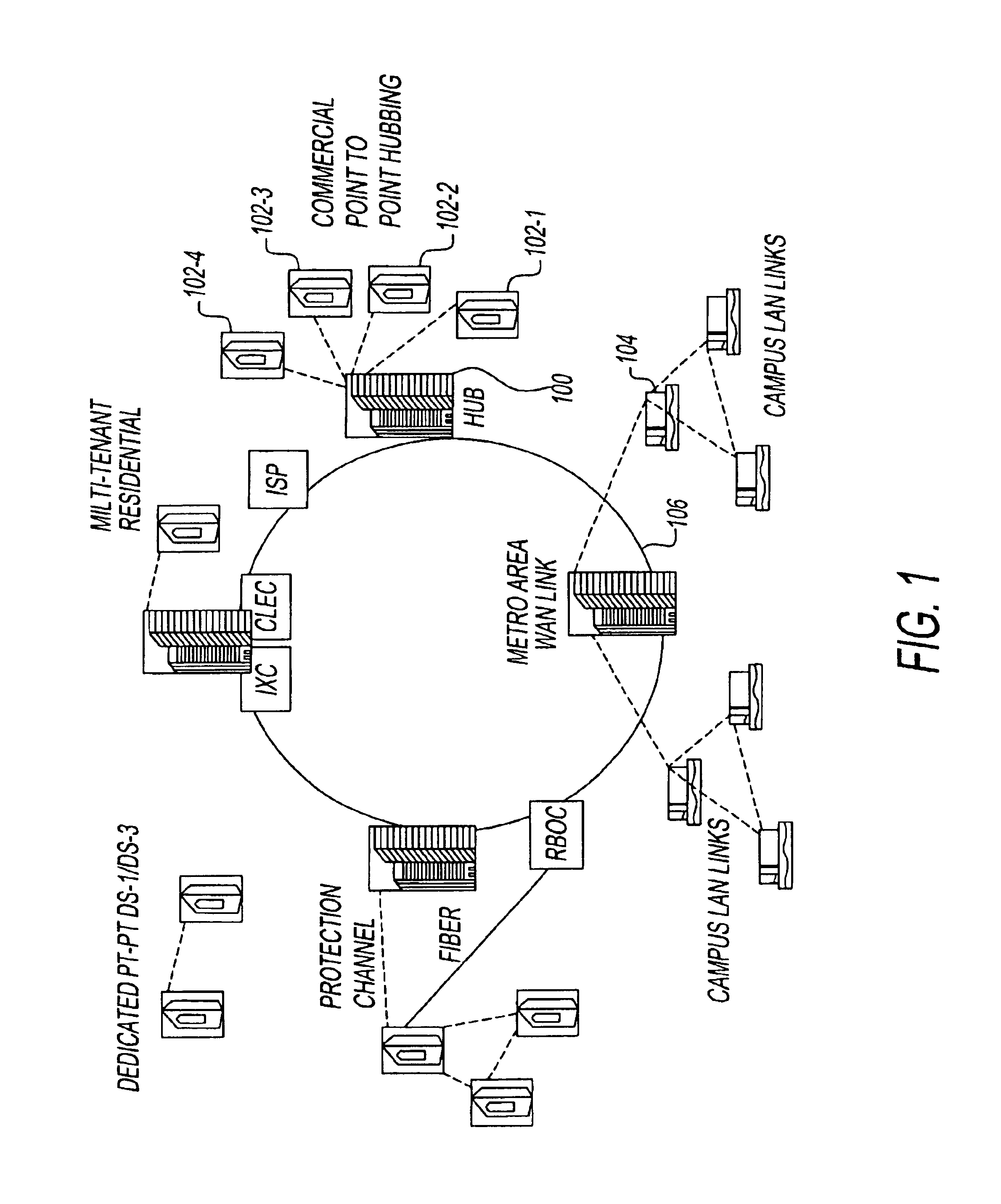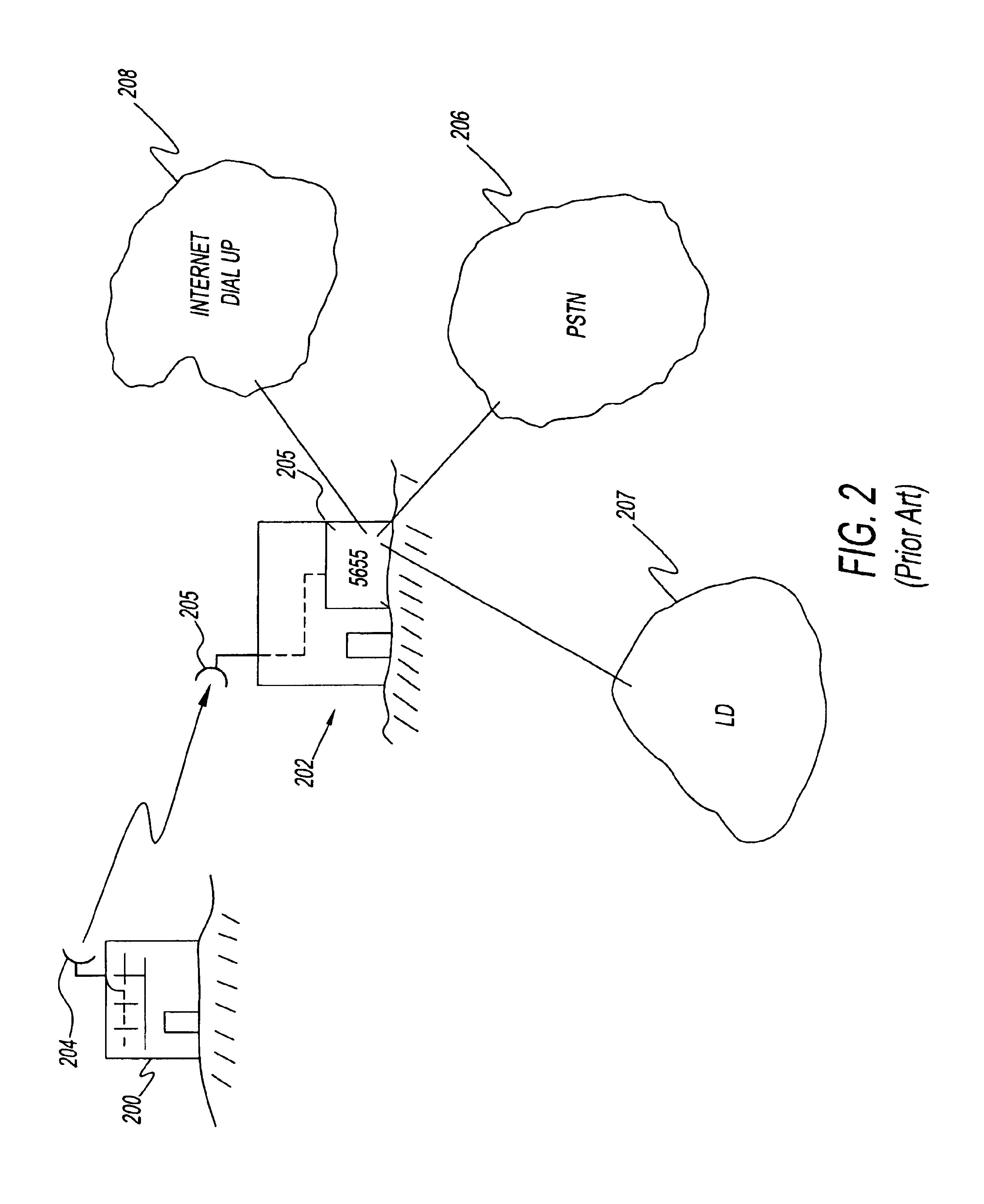Metropolitan wide area network
- Summary
- Abstract
- Description
- Claims
- Application Information
AI Technical Summary
Benefits of technology
Problems solved by technology
Method used
Image
Examples
Embodiment Construction
The present network utilizes a fixed wireless microwave scheme which allows a many to one relationship between hub systems and remote systems located in customer buildings. This technology, termed “multiple access” or “point to multi point,” can support traditional voice and data telephony services as well as commercial and residential broadband multimedia services by combining improvements in spectrum efficiency (and thus available bandwidth) with enhanced intelligence in the metropolitan wide area network.
FIG. 6A illustrates a point to multi point system, characterized by a “one to many” relationship between hub and customer building radio systems. In FIG. 6A, a hub site 601 is equipped with antennas 602, 603 and 604. Antenna 602 transmits to a “sector”605, which covers the physical space occupied by multiple subscriber buildings 606, 607, 608 and 609. Antennas on buildings 606, 607, 608 and 609 in sector 605 all communicate with the single hub antenna 602 of se...
PUM
 Login to View More
Login to View More Abstract
Description
Claims
Application Information
 Login to View More
Login to View More - R&D
- Intellectual Property
- Life Sciences
- Materials
- Tech Scout
- Unparalleled Data Quality
- Higher Quality Content
- 60% Fewer Hallucinations
Browse by: Latest US Patents, China's latest patents, Technical Efficacy Thesaurus, Application Domain, Technology Topic, Popular Technical Reports.
© 2025 PatSnap. All rights reserved.Legal|Privacy policy|Modern Slavery Act Transparency Statement|Sitemap|About US| Contact US: help@patsnap.com



